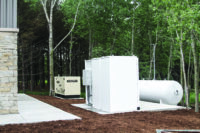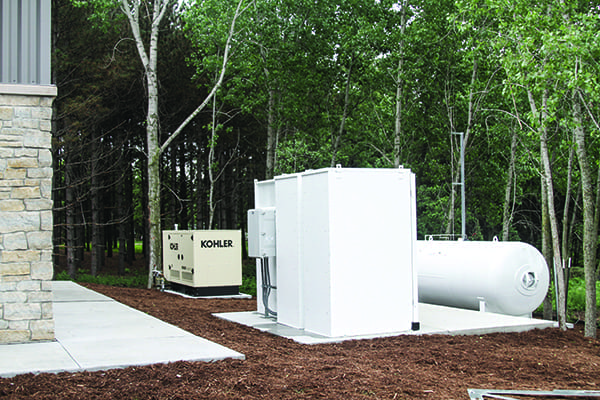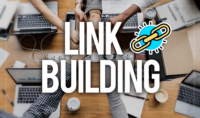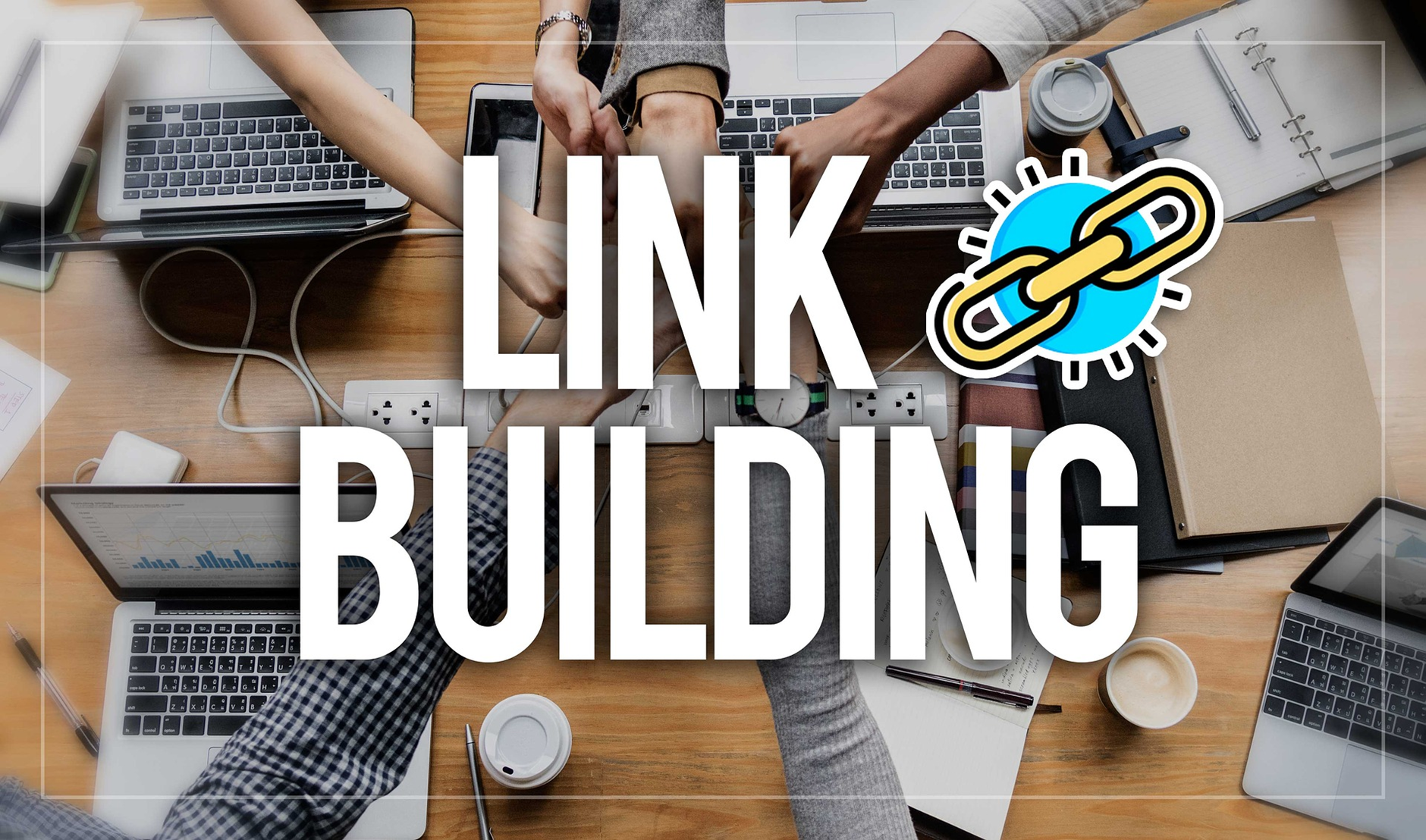Propane and solar complement each other to reduce emissions, increase resiliency When it comes to reducing emissions for commercial construction projects, no single energy source is the answer. Using different energy sources together is the best way to reduce emissions and increase resiliency. Construction professionals and their customers can use propane and solar energy together Read more
Industry Blogs

Propane and solar complement each other to reduce emissions, increase resiliency
 When it comes to reducing emissions for commercial construction projects, no single energy source is the answer. Using different energy sources together is the best way to reduce emissions and increase resiliency. Construction professionals and their customers can use propane and solar energy together to reduce their carbon footprint and remain resilient. After all, commercial buildings account for nearly 35 percent of the electricity consumed in the United States.
When it comes to reducing emissions for commercial construction projects, no single energy source is the answer. Using different energy sources together is the best way to reduce emissions and increase resiliency. Construction professionals and their customers can use propane and solar energy together to reduce their carbon footprint and remain resilient. After all, commercial buildings account for nearly 35 percent of the electricity consumed in the United States.
Solar is the most common renewable energy source. However, relying on intermittent solar power alone isn’t sustainable. That’s where propane can help. Propane on its own is a viable energy solution, and when used with hybrid systems that include solarPV, the combination further reduces emissions and increases reliability. Here’s what you need to know about both systems and how they complement each other:
Propane and solar are a powerful combination.
Most construction professionals already know that solar power is a clean energy option; but most buildings can’t rely just on solar technology. Using propane and solar together, is an excellent way to reduce emissions while meeting a customer’s energy needs. On the continuum of energy choices, from clean to dirty, propane is closer to cleaner renewables than it is to dirtier coal, oil, and wood. Propane produces 43 percent fewer greenhouse gas emissions than using an equivalent amount of electricity generated by the U.S. grid. That’s because propane is used as a primary energy source on site.
Propane-powered technologies produce fewer nitrogen oxide (NOx) and sulfur oxide (SOx) emissions than technologies fueled by electricity, gasoline, and diesel. Because NOx and SOx contribute to acid rain formation and cause respiratory ailments, manufacturers must comply with laws limiting these emissions.
Together, propane and solar are resilient.
Construction professionals are installing large solar systems to help lower price premiums when grid electricity is more expensive and reduce emissions. However, solar power is only feasible if the sun is out. For true cost control and reliability, businesses need to consider adding propane power to help keep their operation running clean and efficiently if their solar power system can’t handle the full load.
When builders combine propane alongside solar, they provide customers with the resilience of whole-building standby protection. For example, propane standby generators are permanently installed on-site, providing quiet, efficient, and clean peace of mind. Power kicks in almost instantly when needed so there’s no disruption to critical systems like heating and cooling, lighting, or refrigeration.
The more energy dense systems that are powered by propane, the less solar energy it needs to run LED lights and fans. Incorporating propane into major systems for building heating and water heating will decrease the amount of solar power necessary, which creates a more cost efficient and resilient solution.
A new study from PERC called, Power Generation: The Emissions Shifting Problem, looks at the recent trends in power generation, microgrids, and how propane systems and solar can work together. Microgrids help improve the resiliency of local electricity distribution systems, that’s part of why they’re growing in popularity. They represent a groundbreaking approach that helps solve several of the problems facing California’s cities.
To provide an alternate power solution to customers located in Mariposa County, solar energy company BoxPower and generator manufacturer Generac provided solar PV with battery backup and a propane generator as a solution to reduce wildfires in one of California’s high-risk areas. Instead of ruggedizing the transmission and distribution (T&D) lines, which could cost more than one million dollars per mile in remote locations, electric utilities deenergized the T&D lines and installed these microgrid solutions to avert forest fires
These microgrid systems are one example of how using propane and solar provide peace of mind. They help businesses increase safety and resiliency, allowing them to retain their clean operation even with a power failure.
For contractors interested in improving a building’s carbon footprint in an affordable and reliable way, propane is a viable energy solution. Using propane with solar power systems reduces emissions and increases reliability. Visit Propane.com to learn more about the benefits of using propane in your next project.

Bryan Cordill is director of residential and commercial business development for the Propane Education & Research Council. He can be reached at bryan.cordill@propane.com.

By Brittany Spencer, Nexstar Network Business Coach This is it, everybody: it’s business planning season. Plenty of companies in the trades are building their business plans and gearing up to put them to work. Budgets are being made; goals are being set. As a business coach, I see a lot of the same issues crop Read more
By Brittany Spencer, Nexstar Network Business Coach
This is it, everybody: it’s business planning season. Plenty of companies in the trades are building their business plans and gearing up to put them to work. Budgets are being made; goals are being set.
As a business coach, I see a lot of the same issues crop up each year during this season, and I’m here to offer a few quick tips on making sure your business plan is ready for takeoff.

-
When building your plans, involve your whole team.
I can’t stress this one enough. Any business plan you build on your own is your plan – not your team’s plan. And if it’s only your plan, why would anyone else care about achieving the goals you’ve set? You need to get buy-in from your team. Make sure your managers are the ones who build the business plan. Get every department head to commit to what they can do next year and let them talk things over with one another. Allow space for your team to offer up concerns and disputes – this is their business plan, after all, and disputes and concerns are going to occur when people are invested in the plan! Once concerns are addressed and settled, have your key managers sign off on the business plan. When everyone has signed off on the plan, it’s set!
-
Tell the whole company.
Have your managers communicate the business plan down to the rest of the company employees. Everyone in your company needs to know about and understand the business plan for next year. Not just managers! Your technicians need to know. Your CSRs and dispatchers need to know. Your install team, your sales team, accounting… heck, your parts-runners need to know! Why? For transparency, and to get everyone rowing in the same direction. A new plan can affect everything, from your working hours to which member of the team communicates with the pallet company you use. How are all your employees supposed to know what success for next year looks like if you don’t show them what they’re shooting for? Consider displaying your company goals in large poster-format somewhere visible to all employees, like in the break room.
-
Break down your business plan into smaller pieces.
Your business plan goals look great! They also might look lofty to the average employee. You can help your entire team by breaking down your business plan into smaller pieces, such as by department.
Let’s say you’re breaking down the goals for your HVAC department first. Part of the plan for the HVAC department is that they’re going to add three technicians in the coming year. OK: who’s going to be responsible for recruiting those technicians? When does that recruiting start? When are interviews going to happen? When do you need to have all three technicians in trucks, running calls?
If you have five different departments, and they all have recruiting goals for the coming year, you’ll need to have someone who’s responsible for recruiting in each department. And if you’re adding people, you’ll need more trucks! Break it down. What’s the current lead time on getting trucks? Who’s going to order them? Who’s going to make sure they get fitted out and wrapped?
Break those goals down by month, then week! Then break them down by day, and make sure you have daily huddles or short stand-up meetings with your team about each day’s goals. You win your year by winning your day. The more days you win, you can then catapult into winning your week, then your month, and ultimately your year. Your team can generate action items daily to create change where needed. And all you’ll need to worry about is making sure your revenue formula is getting the needed calls, converting those calls, and lastly converting those calls at the right average sale.
See what I mean? You need steps for each goal of your business plan, or nothing’s going to get accomplished. Take your business plan and break it down into smaller pieces, assign people to each piece, and assign deadlines to the people. You’ll reach your business plan goals this year!
 Brittany Spencer is a business coach at Nexstar Network. Shas worked in the residential service industry as a financial controller and a general manager for the plumbing, electric, and HVAC trades. She’s passionate about helping members improve their day-to-day operations, financial results, employee ranks, and customer satisfaction. She can be reached at brittanys@nexstarnetwork.com.
Brittany Spencer is a business coach at Nexstar Network. Shas worked in the residential service industry as a financial controller and a general manager for the plumbing, electric, and HVAC trades. She’s passionate about helping members improve their day-to-day operations, financial results, employee ranks, and customer satisfaction. She can be reached at brittanys@nexstarnetwork.com.

With travel getting back to normal and industry trade show season in full go-mode, the Mechanical Hub team has been talking with a lot of manufacturers and contractors about the challenges of the past two years and what everyone sees on the horizon. One of the hot topics recently has been the Employee Retention Tax Read more
With travel getting back to normal and industry trade show season in full go-mode, the Mechanical Hub team has been talking with a lot of manufacturers and contractors about the challenges of the past two years and what everyone sees on the horizon. One of the hot topics recently has been the Employee Retention Tax Credit (ERC). Enacted alongside the Paycheck Protection Program (PPP) in 2020, the ERC was widely overlooked until recently. We asked our professional friends over at Omega Accounting Solutions to share some insights into the program and here are their tips.

When the COVID-19 pandemic began to shut down businesses across the U.S., significantly impacting the economy, the federal government intervened by authorizing billions in economic stimulus through the PPP and the ERC program.
The ERC program gave eligible employers a payroll tax credit for continuing to employ Americans during the pandemic. Many employers took out SBA-guaranteed PPP loans in 2020 but bypassed the ERC. In subsequent legislation, the ERC was made available to more ailing businesses, including those who received PPP funds. Many more businesses qualified for ERC money than claimed it.
______________________________________________________
APPETITE FOR CONSTRUCTION PODCAST
 Did we hear that right? The IRS would write us a check? What is the Employee Retention Credit and who is eligible? The boys take this bonus episode to talk with Omega Accounting Solutions’ J.P. Lowry all about this credit and why business owners need to take advantage of it.
Did we hear that right? The IRS would write us a check? What is the Employee Retention Credit and who is eligible? The boys take this bonus episode to talk with Omega Accounting Solutions’ J.P. Lowry all about this credit and why business owners need to take advantage of it.
______________________________________________________
Construction companies that have already taken advantage of the ERC have received hundreds of thousands of dollars in return from the government because they overpaid payroll taxes during the pandemic. Qualifying through gross receipts, an electrical contracting company in California received an ERC refund of $2.6 million from the IRS. Through gross receipts, a construction company in Texas acquired a $975K ERC refund. Through suspension of services, a landscaping company in Utah received an ERC refund of $437K.

5 Reasons Why Construction Companies Should Apply
- Most Businesses Qualify: Construction companies may qualify if they had to close or limit capacity due to government closures, supply chain issues or distancing requirements.
- Projects/jobs were suspended due to government orders
- Materials suppliers were unable to make deliveries of critical goods
- Operating hours were affected by curfew or cleaning protocols
- Social distancing requirements reduced crew sizes
- Receive up to $26,000 per employee: When first introduced as part of the CARES Act in 2020, the maximum credit allowable under the ERC was $5,000 per employee. With its renewal and expansion under the Consolidated Appropriations Act (CCA), 2021, the maximum credit increased to $21,000. When the ERC and the PPP were rolled out under the CARES Act, businesses had to choose which to use. Many selected PPP because it was easier to sign up for a Small Business Administration-backed loan than to learn the details of eligibility for ERC. However subsequent legislation expanded the eligibility requirements for employers so that they could now receive both, making this a can’t-miss opportunity for construction businesses.
- It’s Retroactive: Though the Infrastructure Investment and Jobs Act (IIJA) of 2021 moved up the ERC’s expiration date, effectively repealing the program for the fourth quarter of 2021, construction companies are still allowed to submit their payroll tax filings for the covered periods. Employers who filed their payroll taxes in 2020 were able to deduct the money directly from their quarterly payroll taxes at that time. Those who didn’t file in 2020 or who are claiming the ERC for the first time on their payroll taxes in 2021 will be refunded for quarterly filed periods.
- It’s a Cash Refund: The ERC is a federal credit determined by a business’ quarterly payroll taxes, not the business’ taxes, and based on how many full-time employees (30+ hours) the company had during the eligibility period. The credit calculation is based on qualified wages paid per employee each quarter. In 2020 the refundable tax credit was 50% of qualified wages up to a $5,000 maximum. In 2021 it was 70% of qualified wages up to $21,000. The IRS issues a refund check in the amount of the credit claimed.
- It’s Easier Than You Think: If a construction business meets the eligibility requirements for the ERC, the credit can be claimed on previously filed payroll tax forms. ERC specialists working in accounting departments and for tax preparers can quickly evaluate whether a company is entitled to the credit and provide any needed guidance. If the criteria are met, these professionals can file amended payroll tax returns for the qualifying quarters and submit them to the IRS.
https://youtu.be/wnvLJr1C96g
Find out if your company qualifies for the ERC by clicking this link: https://bit.ly/mechanicalhub
In addition to the ERC, the federal government has introduced other credits designed to help businesses weather the long-term effects of the pandemic and to encourage both innovation and the employment of American workers. Companies should talk with their tax preparers about these additional credits available to them including the Research & Development (R&D) tax credit, available to companies developing new or improved business components, and the PPP forgivable loan program, also established during the CARES Act and implemented and backed by the Small Business Administration.
For over 15 years, Omega Accounting Solutions has been a champion of small- to mid-sized businesses, empowering owners to make informed business decisions. As an accounting and data firm, Omega helps business owners navigate the complexities of the accounting process, particularly for the enormous opportunities around the Employee Retention Credit. Omega has a documented process for the ERC and limits risk for clients. Over $350 million in ERC cash has been recovered for Omega clients, spanning across an impressive range of industries. For more information about qualifying for the ERC and receiving a free evaluation from Omega Accounting Solutions, visit https://bit.ly/mechanicalhub

Commercial construction professionals can rely on propane for lower emissions, enhanced resiliency Commercial buildings are experiencing more and more unplanned power outages and it’s causing incredible strain on an already fragile electrical grid. In fact, the United States endures more blackouts than any other developed nation. And according to federal databases at the Department of Read more
Commercial construction professionals can rely on propane for lower emissions, enhanced resiliency
Commercial buildings are experiencing more and more unplanned power outages and it’s causing incredible strain on an already fragile electrical grid. In fact, the United States endures more blackouts than any other developed nation. And according to federal databases at the Department of Energy (DOE) and the North American Electric Reliability Corporation (NERC), the number of U.S. outages lasting more than an hour have increased steadily over the past decade. This has construction professionals looking to build more resilient buildings and one way to do that is microgrids.
A microgrid is a local energy grid with control capability, which means it can disconnect from the traditional grid and operate autonomously. Within microgrids are one or more kinds of distributed energy—solar panels, wind turbines, combined heat and power, and or, generators—that produce power and often energy storage solutions. This is helpful during sudden or planned power outages. The quest for a more reliable, secure, and clean energy system is driving investment in microgrid technologies that can deliver superior reliability and resiliency for the nation’s aging and vulnerable grid.

Propane, which is easily transported and stored on site for indefinite periods of time, offers economic and environmental benefits that make it a great low-carbon energy source for microgrids. The Propane Education & Research Council (PERC) has an analysis called, The Opportunity for Propane in Microgrids, that illustrates the benefits of using propane generators in hybrid microgrids in commercial applications. Propane offers lower emissions, comparable levelized costs of electricity, and added resiliency compared to diesel. It also helps minimize the impact of a power outage to a commercial building’s vital systems like smoke and fire detection, elevators, refrigeration units, heating and cooling equipment, health and safety equipment, communications, and many other applications.
Propane is an environmentally friendly energy source
Severe weather events coupled with natural disasters have led to increased electrical grid failures. Whether planned or unplanned, power outages can happen at any time. In response to the outages, there’s been a spike in generator sales. The rise is seen in storm-wrecked coastal areas, inland tornado alleys, and particularly in places like California and Texas with increased penetration of renewable energy. For many years, diesel has been the chosen generator fuel. As more and more diesel generators are being purchased, their harmful emissions are impacting local communities. According to data from PERC, propane is the better option and can help lower emissions.
A new study from PERC called, Power Generation: The Emissions Shifting Problem, looks at the recent trends in power generation, microgrids, and how propane systems can offer a low emissions and resilient solution for commercial construction professionals and their customers. Compared to diesel, propane significantly improves local air quality by mitigating nitrogen oxides and particulate matter which are known health hazards. Propane also emits significantly less carbon than diesel-powered generators. According to the U.S. Energy Information Administration (EIA), propane is 16 percent cleaner than diesel when it comes to CO2 per unit of energy.
Microgrids that utilize propane as an energy source get even cleaner when renewable propane is considered. Renewable propane is made from a mix of waste residues and sustainably sourced materials—including agricultural waste products, cooking oil, restaurant grease, and animal fats. Because it’s produced from renewable feedstocks, renewable propane is even cleaner than conventional propane—and far cleaner than other energy options. Renewable propane’s chemical structure and physical properties are the same as conventional propane, which means it can be used for all the same applications without any modifications to engines or equipment.
In its 2021 wildfire mitigation plan report, Pacific Gas & Electric (PG&E) identified that a technology combination of solar photovoltaic (PV) and battery energy storage with supplemental propane gensets is not only the most cost effective and reliable solution for initial remote grid sites, but also the cleanest.
Propane is a safe and resilient energy source
Microgrids help improve the resiliency of local electricity distribution systems, that’s part of why they’re growing in popularity. They represent a groundbreaking approach that helps solve several of the problems facing California’s cities.
To provide an alternate power solution to customers located in Mariposa County, solar energy company BoxPower and generator manufacturer Generac provided solar PV with battery backup and a propane generator as a solution to reduce wildfires in one of California’s high-risk areas. Instead of ruggedizing the transmission and distribution (T&D) lines, which could cost more than one million dollars per mile in remote locations, electric utilities deenergized the T&D lines and installed these microgrid solutions to avert forest fires. Based on the success of the microgrid applications, PG&E plans to install 20 more in the next year.
Ultimately, microgrid systems provide peace of mind. Propane power generation equipment used in microgrid applications can help businesses increase safety and resiliency allowing them to retain their clean operation even with a power failure. Propane is an affordable energy choice capable of delivering efficient, on-site energy at all times, including during power outages. Replacing diesel assets with propane-powered equipment will continue to push us toward significant air quality improvements and decarbonization.
To see more of PERC’s research supporting the benefits of using propane in microgrid applications, visit Propane.com/Research.
 Bryan Cordill is the director of residential and commercial business development at the Propane Education & Research Council. He can be reached at bryan.cordill@propane.com.
Bryan Cordill is the director of residential and commercial business development at the Propane Education & Research Council. He can be reached at bryan.cordill@propane.com.

Promoting your website with the help of link building is just one of many SEO tactics. Being one of the oldest strategies to make your website more visible in search results, it is still one of the effective ways to significantly boost visibility and discoverability. What’s more, there are a lot of different tactics to Read more
Promoting your website with the help of link building is just one of many SEO tactics. Being one of the oldest strategies to make your website more visible in search results, it is still one of the effective ways to significantly boost visibility and discoverability. What’s more, there are a lot of different tactics to grow the number of high-quality do-follow backlinks, and in this article, we will discuss the most effective ones.
Why Should You Use a Link Building Strategy?
Link building is a universal strategy that is suitable for promoting a website in any industry. Its essence is simple – the more websites link back to your site, the more visible and authoritative it becomes in the opinion of Google. Even simpler, high-quality links attract traffic and increase the authority of the site, improving positions in the issue.
Most projects from different industries will not refuse such a result. But what tactic should you follow to get it? To be honest, there is only one link-building strategy that works. You can’t even imagine how simple it is. You need to post something that people want to link to.
What’s more, you don’t have to post huge blog posts or interactive guides to reach as many people as possible. But if you’re at the beginning of your SEO journey, a few tactics will help with link building. Below you will find the top 5 strategies that will be effective in this matter.

Top 5 SEO Link Building Strategies for Contractors
What link-building strategies should you focus on to promote your services? Given the specifics of the niche, it is necessary to adapt the strategies that are most effective for your business. Below we will look at 5 strategies that you should definitely pay attention to and make them part of your overall backlink strategy.
1. Guest Posting
If you are looking for a backlink strategy that will allow you to get high-quality backlinks and an influx of your target audience, then you should definitely consider guest posting. The essence of this strategy is to find a semi-niche partner site that is ready to accept a guest post with a link to your site. The more authoritative the partner site is, the more weight the backlink will provide in the context of the rating.
An important point in the implementation of guest posting is the selection of a relevant platform for cooperation. In this case, quality is more important than quantity. Therefore, it is better to get one high-quality backlink than five links from low-quality platforms. Also, today there are many third-party services and tools for bloggers that allow you to effectively implement this strategy with an emphasis on quality. This saves money and also provides the ability to delegate content creation to a partner site.
2. Outreach
What is outreach? This is when you reach out to people in your niche (for example, via email, feedback block, or social networks) and present your project to them. You can link to a blog article, landing page, video presentation, or online store.
However, the method works best with useful content. Tell experts, the media, and customers in your industry about the materials they might need. Offer to mention your content where appropriate. At the same time, it is worth focusing on the location, which will work in tandem with local SEO.
3. Local SEO
Local SEO is something you can’t miss when it comes to delivering physical goods and services. Local SEO is an opportunity to improve brand recognition locally regarding a specific geographic region. The implementation of the local SEO strategy allows you to get the following benefits:
- Improve online and offline visibility.
- Provide more traffic, which increases the chances of conversion.
- Increase the level of trust.
- Attract potential consumers of goods/services.
To get started with this strategy, it is worth working out the following points:
- Use GMB (Google my Business). It comes with the possibility to create free business listings. This factor will be considered when we talk about ranking businesses in organic local search.
- Collect customer reviews. Reviews play a key role when we talk about local search and ranking.
- Consider local link building. For example, you can use guest posting to collaborate with businesses from the same city or country as you.
Local SEO is a good way to get backlinks while still reaching your target audience. Therefore, you should not miss this opportunity and add local SEO to your overall backlink strategy.
4. Unique Content
Content can also be an effective tool for getting backlinks in the long run. Wondering how content can bring a backlink? It is enough to add unique data, statistics and research.
First, the use of unique data is one of the indicators of authority. Secondly, other writers can use your data when creating content and linking to your site. In this way, you will get a backlink for your site. At the same time, we are not talking about some incredible arrays of data that you need to process in order to get statistics. Even a few numbers can become a source for backlinks.
By doing so, you kill two birds with one stone. You generate high-quality content and get backlinks, which will increase the level of authority in the eyes of search algorithms. So, there is a need to reboot your content with such data. What’s more, organic backlinks are the most valuable ones so Google appreciates them most.
5. Crowd Marketing
Crowd marketing involves building links through communities and forums. Reddit, Quora, online marketplaces, and social media are good places to promote your site and post mentions. You can also leave useful comments on blogs. This is a good way to get some extra links. This way you can get your content or ideas out to more people. It is possible that your comment will be noticed by the blog owner and will offer cooperation. Your potential consumers can be among the readers as well.
Wrapping Up
Use these strategies to get the backlinks that will help you get your coveted rankings. As you can see, most of them involve not only getting backlinks but also attracting potential customers, so you are welcome to kill two birds with one stone and drive ROI in the long run.
 Guest Blogger: Mary Hunter is a successful American freelance lifestyle blogger with advanced writing skills. She had experience in editing, marketing, and her works appeared in different publications and website articles. Her main goal in life is not to set up any goals and keep working every day.
Guest Blogger: Mary Hunter is a successful American freelance lifestyle blogger with advanced writing skills. She had experience in editing, marketing, and her works appeared in different publications and website articles. Her main goal in life is not to set up any goals and keep working every day.
